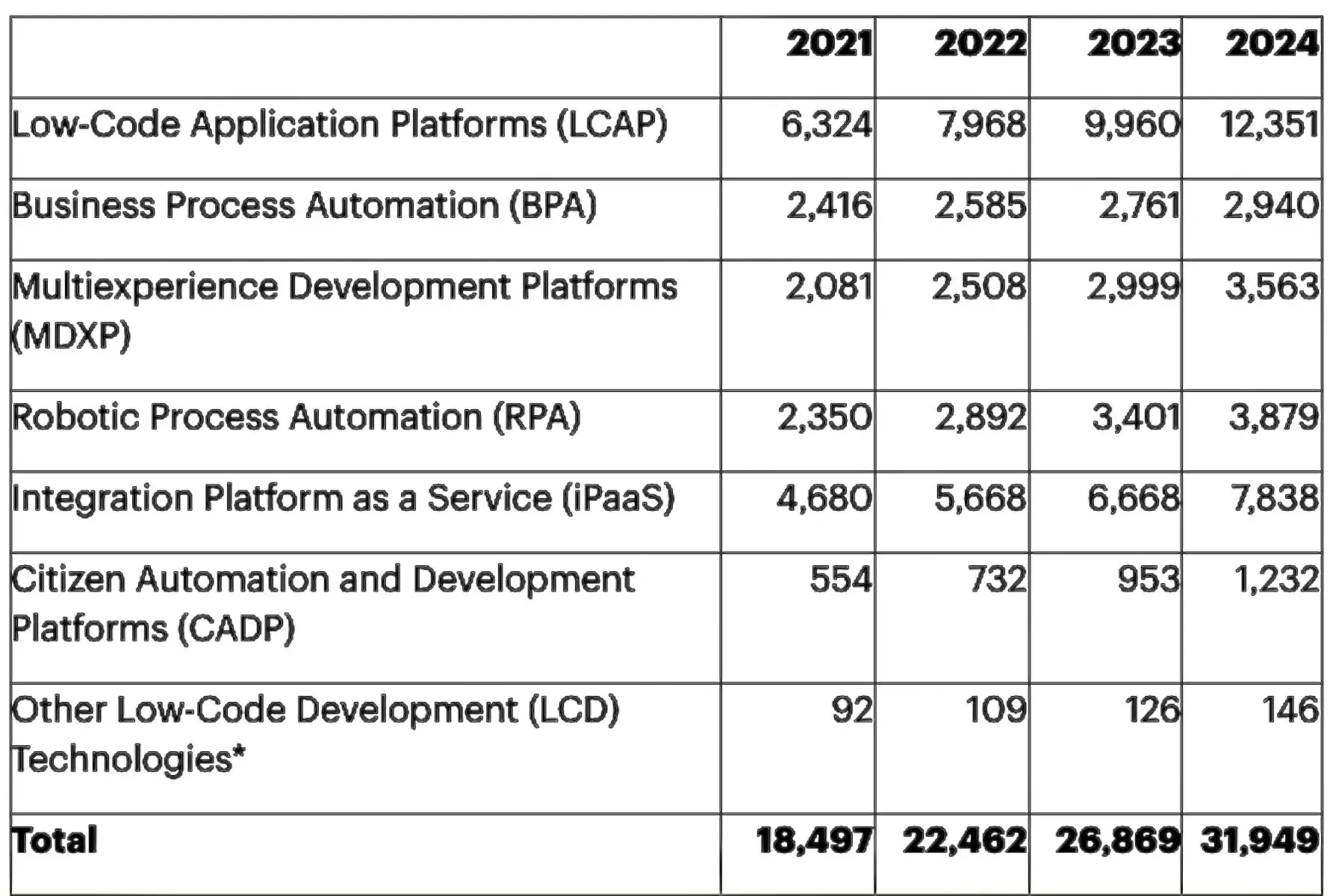Image Source: FreeImages
As businesses strive to accelerate their digital transformation, the demand for innovative solutions in the world of technology continues to grow. In recent years, low-code and no-code development platforms have emerged as game-changers, revolutionizing the software development landscape. These platforms empower businesses to build applications faster and with minimal coding requirements. In 2023, the popularity and adoption of low-code and no-code platforms are expected to skyrocket, transforming the way businesses approach application development.
Enhanced Speed and Agility: Simplifying the Development Process
Traditionally, building software applications required extensive coding knowledge and a time-consuming development process. However, low-code and no-code platforms have simplified this process, enabling users to quickly create applications. These platforms provide intuitive visual interfaces, drag-and-drop functionalities, and pre-built components that eliminate the need for extensive coding. As a result, businesses can develop and deploy applications in a fraction of the time, enhancing speed and agility in their development cycles.
Democratization of Development: Opening Doors to a Broader Audience
Low-code and no-code platforms have democratized the application development process. Previously, businesses heavily relied on skilled developers to bring their software ideas to life. However, with low-code and no-code platforms, individuals with minimal technical expertise can actively participate in application development. Business analysts, subject matter experts, and citizen developers now have the opportunity to contribute to creating applications, reducing the dependency on a limited pool of developers. This democratization of development fosters innovation and promotes cross-functional collaboration within organizations.
Greater Efficiency & Productivity: Streamlining Development Processes
The simplicity and ease of use offered by low-code and no-code platforms result in greater efficiency and productivity. These platforms provide a wide range of pre-built templates, modules, and integrations that can be readily utilized to build applications. Developers can focus on critical and complex aspects of customization and integration, while non-technical users handle simpler tasks. The modular nature of low-code and no-code platforms also enables efficient reuse of components, saving time and effort. As a result, businesses can streamline their development processes, increase productivity, and allocate resources more effectively.
Flexibility & Scalability: Adapting to Changing Business Needs
One of the key advantages of low-code and no-code platforms is their flexibility and scalability. These platforms offer a robust foundation that can accommodate a wide range of application types and business requirements. With the ability to customize and extend functionalities, businesses can tailor applications to their specific needs without starting from scratch. Furthermore, low-code and no-code platforms provide scalability to handle increased user demands and evolving business needs. Organizations can quickly adapt and iterate their applications to keep up with market dynamics.

Table 1. Low-Code Development Technologies Revenue (Millions of U.S. Dollars)
| 2021 | 2022 | 2023 | 2024 |
|---|---|---|---|
| 6,324 | 7,968 | 9,960 | 12,351 |
| 2,416 | 2,585 | 2,761 | 2,940 |
| 2,081 | 2,508 | 2,999 | 3,563 |
| 2,350 | 2,892 | 3,401 | 3,879 |
| 4,680 | 5,668 | 6,668 | 7,838 |
| 554 | 732 | 953 | 1,232 |
| 92 | 109 | 126 | 146 |
| 18,497 | 22,462 | 26,869 | 31,949 |
(Source: Gartner)
The Growing Market for Low-Code and No-Code Platforms
The market for low-code and no-code platforms has experienced significant growth in recent years. According to Gartner, the market grew from $3.47 billion in 2019 to a projected $8 billion in 2022. This trend is expected to continue, with the market forecasted to reach $10 billion in 2023 and $12.3 billion in 2024. The increasing demand for faster application delivery and highly customized automation workflows is the driving force behind the adoption of low-code and no-code development platforms.
The Need for No-Code and Low-Code Platforms
The shortage of IT specialists, the need for process automation, and the demand for rapid digitization are some of the factors driving the development of no-code and low-code platforms. These platforms offer an alternative approach to traditional coding, allowing businesses to build applications without extensive coding knowledge. As a result, organizations can overcome the challenges of the IT skills gap and accelerate their digital transformation efforts.
The Role of No-Code Platforms in Product Development
No-code platforms play a crucial role in the product approach by making it easier to create products without the need for coding. These platforms provide developers with a set of tools and components that can be used to quickly create applications. By leveraging pre-built templates and customizable options, developers can create products that meet their specific needs. Companies like Airtable and Zapier have successfully utilized no-code platforms to create applications and automate processes, showcasing the potential of no-code in product development.
No-Code Technology and its Impact on Cloud Technologies
Cloud technologies, encompassing data processing, transmission, and remote access to services and software, can benefit from no-code development. The use of no-code platforms reduces the time needed for analysis and evaluation, enabling all employees to participate in the process, not just programmers. The simplicity of no-code usage enhances the efficiency of remote work, remote access to company data and materials, remote planning, and the exchange of new data. Companies like Amazon Web Services (AWS) leverage no-code development to provide customers with simplified ways to build, deploy, and manage cloud-based applications.
No-Code Platforms and the Transition to Web3 Development
Web3, the concept of a decentralized web, offers new possibilities for application and service development. No-code platforms can simplify the transition to Web3 by providing an accessible entry point for individuals and organizations. Without the need for experience or expertise, developers can quickly get started and explore the potential of the blockchain. Companies like Cryptfunder are utilizing no-code to develop Web3 applications, enabling secure borrowing and lending of cryptocurrency on a platform-agnostic marketplace. The combination of no-code and Web3 presents opportunities for widespread adoption and innovation.
The Combined Use of No-Code and AI: Revolutionizing Business
Artificial intelligence (AI) has the potential to revolutionize businesses, but the barriers to entry can be daunting. No-code/low-code AI tools and platforms make it easier for anyone to get started with AI and leverage machine learning in innovative ways. These tools range from entry-level options for those with no experience in machine learning to advanced platforms that assist experienced users in reducing tedious tasks associated with data preparation and algorithm design. Notion Data Service, for example, offers a no-code platform with an AI assistant that provides developers with data-driven insights and assists with various tasks related to application development.
Why Embracing the Low-Code and No-Code Revolution Should Be Considered/
As we embrace 2023, the rise of low-code and no-code development platforms is transforming the way businesses build applications. These platforms empower organizations to accelerate their digital transformation journey by enabling faster, more efficient, and more collaborative development processes. With their intuitive interfaces, drag-and-drop functionalities, and pre-built components, low-code and no-code platforms have opened the doors to application development for a broader audience, fostering innovation and unleashing creativity. By leveraging these platforms, businesses can become more agile, improve productivity, and stay ahead in an increasingly competitive digital landscape. As the low-code and no-code revolution continues to gain momentum, we can expect to witness even greater advancements and possibilities in the realm of application development
Peter Jonathan Wilcheck
Digital Transformation
Subject Matter Expert
www.peterjonathanwilcheck.com
Post Disclaimer
The information provided in our posts or blogs are for educational and informative purposes only. We do not guarantee the accuracy, completeness or suitability of the information. We do not provide financial or investment advice. Readers should always seek professional advice before making any financial or investment decisions based on the information provided in our content. We will not be held responsible for any losses, damages or consequences that may arise from relying on the information provided in our content.



